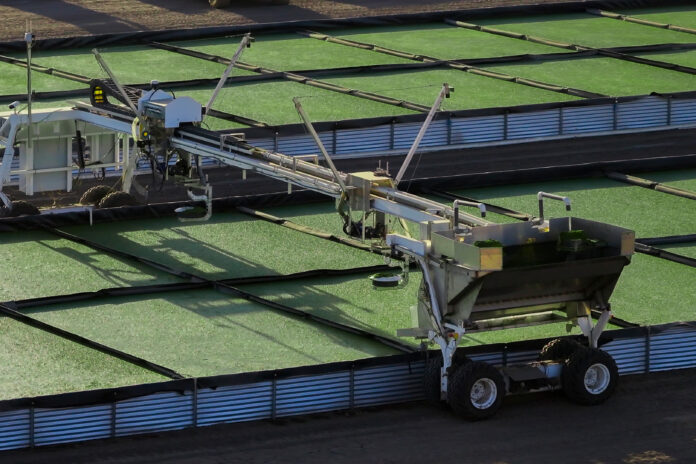Introduction to Fyto
Farmers today face numerous challenges, including supply chain instability, nutrient management, and waste disposal. However, one of the most significant concerns is maintaining profitability in the face of changing markets and increased uncertainty. To address these issues, Fyto, a company founded by former MIT staff member Jason Prapas, has developed a highly automated cultivation system.
What is Fyto’s Solution?
At the heart of Fyto’s system is Lemna, a genus of small aquatic plants also known as duckweed. Lemna is rich in protein and can double in biomass every two days. Fyto has created an automated cropping system that utilizes nitrogen-rich wastewater from dairy farms to grow Lemna in shallow pools on less productive farmland. The company has also developed large agricultural robots that monitor plant health and harvest the Lemna sustainably. This approach allows for the creation of a high-protein cattle feed or fertilizer supplement.
How Fyto’s System Works
Fyto’s systems are designed to rely on minimal land, water, and labor while creating a more sustainable and profitable food system. The robotic system takes the guesswork out of farming by monitoring the crop daily, tracking inventory, and detecting any nutrient deficiencies. This data is then used to suggest interventions to ensure healthy growth.
The Birth of Fyto
Jason Prapas’ journey to founding Fyto began with his work at an MIT spinout called Green Fuel, where he harvested algae to make biofuel. He later co-founded Factor[e] Ventures, which funded and incubated startups focused on improving energy access in emerging markets. Through this work, Prapas was introduced to MIT’s Tata Center for Technology and Design, where he became interested in commercializing new technologies.
From Kiddie Pools to Cow Farms
Prapas started growing aquatic plants in his backyard, using them as a fertilizer source for vegetables. This experience taught him the challenges of scaling up Lemna production on farms. He realized that he would have to invent both the farming method and the equipment to grow it cost-effectively. Prapas began discussing his ideas with others in 2019 and partnered with Valerie Peng, a graduate student at MIT, to develop Fyto.
A New Farming Method
Lemna can produce more protein per acre than soy, but it requires a lot of nitrogen to grow. Fortunately, many farmers, especially large dairy farmers, have abundant nitrogen sources in their waste streams. Fyto’s system uses these waste streams to grow Lemna, which can then be used as feed or fertilizer. The company has run pilots on farms, trialing the crop before delivering it to customers.
Expansion and Future Plans
Fyto is currently awaiting California’s approval for use in feed, but Lemna has already been approved in Europe. The company has also been granted a fertilizer license and plans to sell new fertilizer products this year. Although Fyto is focused on dairy farms, it has also grown Lemna using manure from chicken farms and sees potential applications for its technology in other industries.
Conclusion
Fyto’s innovative approach to farming has the potential to address some of the biggest challenges facing farmers today. By utilizing wastewater and minimizing land, water, and labor, Fyto’s system creates a more sustainable and profitable food system. As the company continues to expand and develop its technology, it may play a significant role in shaping the future of agriculture and helping to create a more resilient food system.

